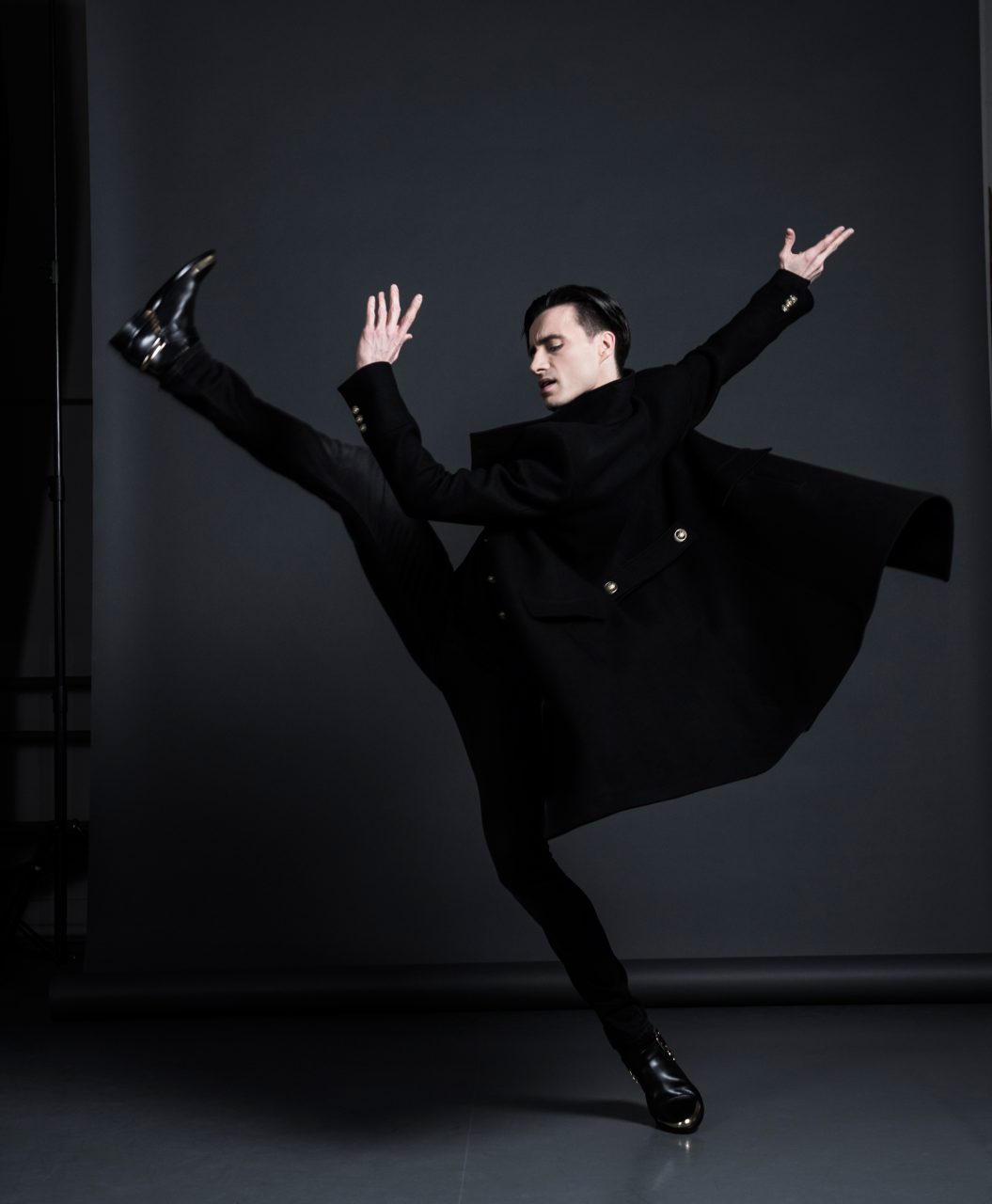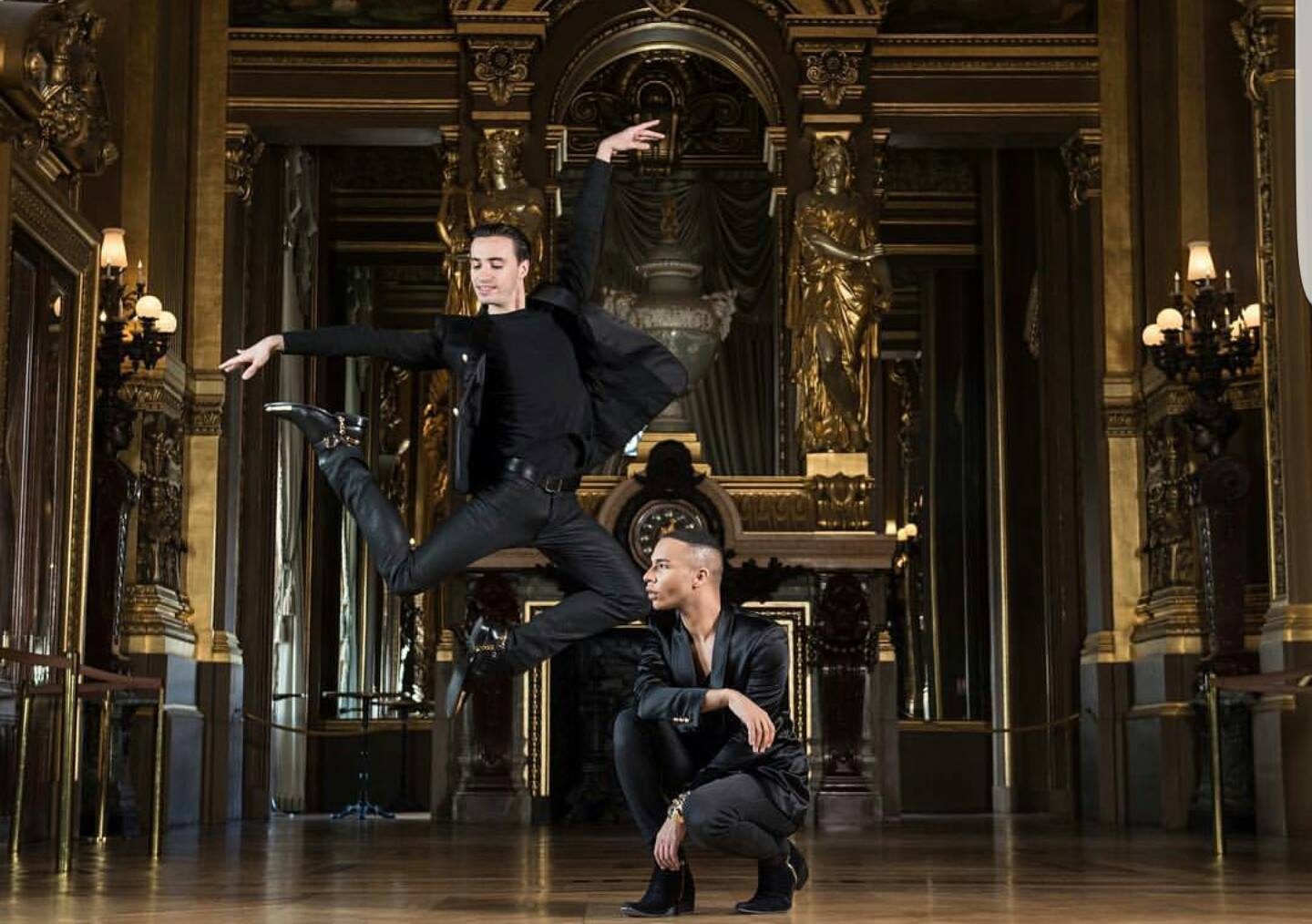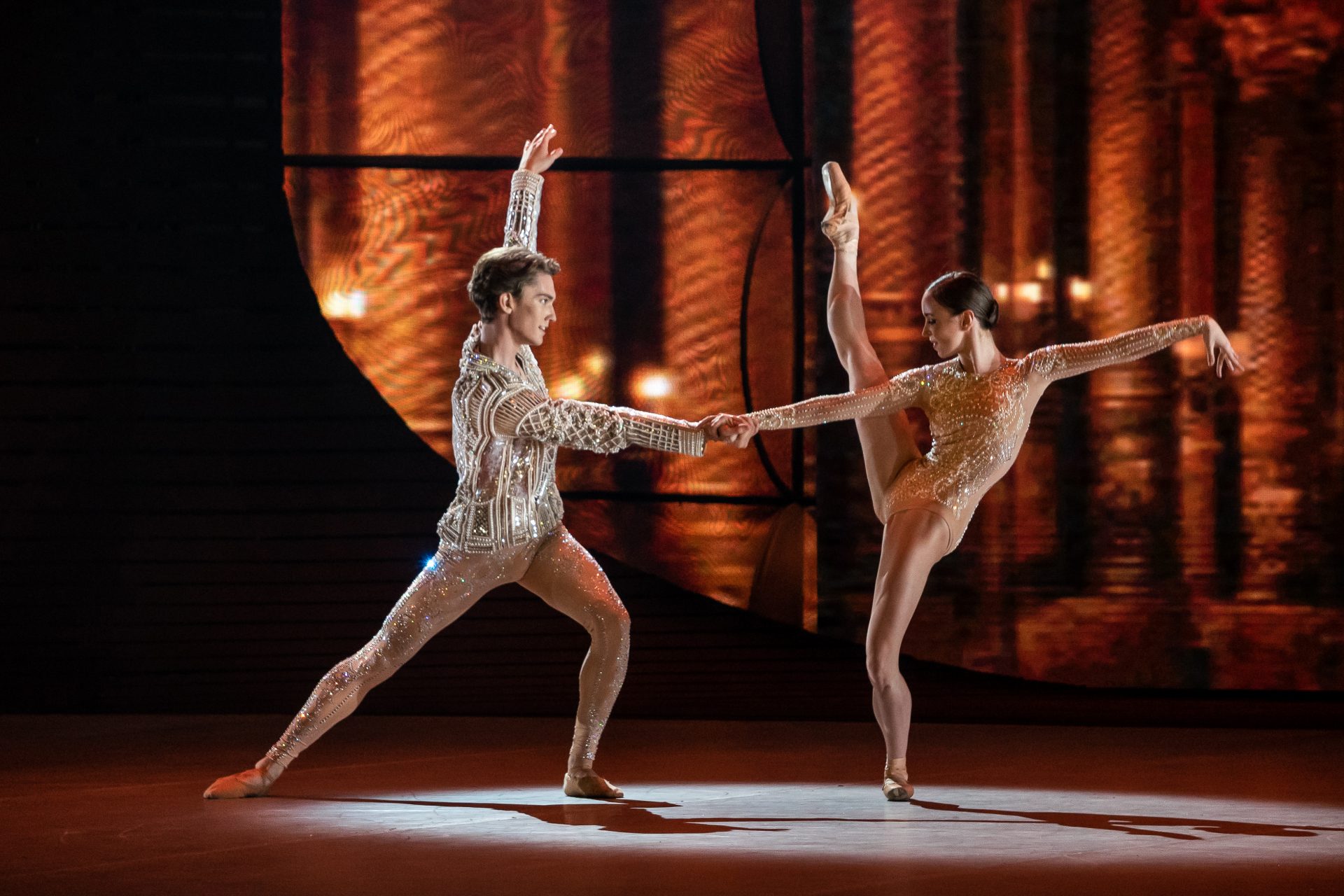There are people who consider classical ballet as an old chapel – a beautiful heritage of the past, constrained in its walls, that is better to be preserved and left untouched, displayed, like a museum piece, only to those theatre lovers that already learned to admire it.
And then there are people like Sebastien Bertaud, who fights for the renaissance of this classical art form, who breaks the walls of theatres and brings classical ballet to the new stage, showing that it is still very much alive, evolving and, just like centuries ago, can touch the hearts and minds of people no matter their background.
“It is my ambition to make people of today, the world, to see the ballet art form as wonderful as I see it”
Sebastien Bertaud
Let’s first talk about the Big Ballet show. How did you become a part of it and what’s your overall impression?
First of all, I already knew about this great program, I saw it on YouTube and was very impressed by the quality of such a show on the state TV. In France, these dance-oriented TV programs are usually after midnight or at 5 in the morning, while Russians have it on prime time and in a much higher quality. One day I received an e-mail from Julian Mackay, and he wanted me to join him to participate in this project. He is from the new generation of dancers and wants to connect to the new generation of artists, photographers, designers, and choreographers. I was very happy that my work was appreciated by such a distinguished dancer as Julian, not to mention that he very much fits into my concept of the Renaissance piece.
So how was it working with Julian?
It was very dynamic: he came to Paris, we rehearsed, he went back to Russia to dance Cinderella, then came back, we rehearsed some more… He has an incredible energy and I was very happy to connect with such an artist at this point in his career.
But Renaissance was designed for Opera Paris and Opera Paris dancers, not to mention is considered to be very hard. While Julian doesn’t have the background of Opera.
That’s a very good remark, at Paris Opera I chose my cast of the dancers very carefully, I wanted to present the best classical trained dancers. That is why I chose Amandine Albisson, Dorothee Gilbert, Hugo Marchand, Mathias Heymann among others… When Aurelie Dupont organized this evening she offered us a carte blanche to choose whoever we wanted. It was like a dream, usually, you are given just a couple of stars dancers for one piece, while I had 5! Indeed, people who danced Renaissance are among the best ballet dancers in the world. As for Julian, it was the first time that a dancer outside of Opera danced this part, but he is a high-level international dancer who fits this role perfectly. Even Svetlana Zakharova said that he has this Louis XIV dancer vibe about him, and Renaissance was designed around this theme, around rebirth of this virtuoso and opulent style, present in France since the Sun King, to the Palais Garnier architecture, until now.
It’s true that he has this very classical look.
Exactly, but a classical of today. He combines classic and modernity, and I want this style to be shared. Because now, too many times, when you say “classical ballet“ most of people immediately associate it with something old, like an old chapel, constrained in its walls. But I don’t believe that’s still true. Classics aesthetic can be modern at the same time and I hope that people like Sergei Polunin which I admire, or Julian, or me, we are able to share this vision of a modern and generous classical ballet aesthetic for the audience.
How hard was it to get Julian ready for the role? He came to Paris two times for rehearsals, but was it enough for such a complex part?
He is a very fast learner, so we had more than enough time. I’ve also adapted the choreography a bit to showcase his and his partner’s best qualities. So it was a bit different from the Paris Opera choreography. At the same time, it’s a new step for this choreography – to go a bit faster, to move a bit more. Julian also has this very beautiful jump and turn, so I’ve included it into the choreography. But honestly, it was very impressive how fast he picked up the part.
And you in turn went to Russia, what are your impressions?
Very positive, I love Russia! It’s one of the few societies that respect and understand so well the ballet art form. I’ve also been on tour at the Bolshoi before with Paris Opera so it’s an area I know well and I felt at ease and in understanding with the Russian culture. Unfortunately, it was quite a brief visit since at the same time I was on tour in Kazakhstan with my group of dancers and had only a couple of days in Moscow.
And what are your thoughts on the feedback given by the jury after the performance?
Very interesting! When you are a choreographer, most of the time you are alone. When I was at the choreographic academy we were only four and I was the only one who went to work in the ballet field, others went for contemporary. So not only you feel a bit lonely, but you also don’t really have people to discuss the issues of ballet choreography of today. I have a lot of admiration towards Alexei Ratmansky and Christopher Wheeldon for example, but I’m not in contact with them. So it was great to see the jury’s point of view, especially Svetlana Zakharova. I remember when she was at the Paris Opera on tour and I was dancing in corps-de-ballet, admiring her, but I never even dreamt of talking to her. So you can imagine how happy I was to receive this wonderful feedback from her on my choreography. I spent a couple of months thinking about all this, and for my next creation for the project at Roma Opera Ballet I will put all the feedback and suggestions from the jury in my work there.
Is it true that you want to make a project with Svetlana?
Want? I dream of it! I always wanted to make a choreography for a company in Russia, and Svetlana is for me the quintessence of dance. I have so much respect and admiration for her work, she is so inspiring. I hope that Bolshoi Ballet show will help to make my work a bit more visible to the Russian directors. As for Svetlana, as I said, it would be a dream came true. And if by any chance the opportunity happens one day, I’ll be ready! I already have the idea: I dream to create a ballet especially for her on Tchaikovsky violin concerto!
Your choreography is very classical, very noble. Can you tell us about the creative process behind it, where do you draw inspiration from?
My main inspiration always comes from music, and the rules of classic architecture. But mostly by the music, I work on my reaction to it: I listen on repeat to the music I want to work with and sometimes it speaks to me, I understand physically what I want to do with it. This is how I compose. You know the famous quote “Balanchine sees the music and hears the dance”? I always think about it in my work. Renaissance, for instance, is very much related to the Paris Opera because it was created for the Academy. So I tried to put all my understanding of Opera’s history into this tribute to the heritage of Louis XIV, the French style, Versailles and what this legacy means today. This is why I teamed up with Olivier Rousteing and Maison Balmain. We are on the same team, him and I. He directs this very famous Maison of French couture with amazing Savoir-Faire, he’s contemporary but at the same time not into minimalism. I see a link between our work.
How big of a role did Olivier Rousteing play in the creation of Renaissance?
Huge role! When we began speaking about the project, he started doing some sketches and I translated those sketches into choreography. For example, the final pose of Renaissance was heavily inspired by one of the sketches Olivier made.
So it wasn’t like you were working only on the dance while he was working just on the costumes? You sort of co-created all of it together?
Absolutely, it was like a dialog between us, for example, he designed this long white dress that you can see in the original choreography of the Renaissance and he said that If I were to add a turn, the dress would move in this very beautiful way. Sometimes I would suggest him some forms that are suitable for ballet… it was very much like a dialog between the two of us and not just everyone does his own part.
You are still a dancer at Opera. Is it hard to combine the work of choreographer and of a dancer, especially in such a theatre?
It’s very difficult because it’s very demanding. Challenging mentally, physically, but I’ve been here for a long time and I think I know now how to organize myself in order to do both fully. I had a chance to perform in countless performances, worked directly with Maurice Bejart, Pina Bausch, I was an assistant choreographer of William Forsythe… so I’ve done already a lot. And now, after 18 years, I feel like I can at the same time think about what’s going on stage and what I want to create today. Also, the Paris Opera really helps me with my endeavors as a choreographer, for 10 years now they have chosen to allow me to create and perform several pieces of choreography and then this amazing project of the choreographic academy was created with William Forsythe as a mentor. He gave us all this freedom and possibilities. And thanks to that I had the courage to build this creation with Balmain and what came out of that is just unbelievable. I feel very lucky.
And what about young choreographers in general? Do the theatres help them to promote their work, or do they have to fight for everything? How does the world work for them?
I think it’s us, the choreographers, who have to do something interesting, something relevant that speaks to the audience and the world of today. If it’s good, if it’s meaningful, we don’t really have to be helped push, everything sort of happens somehow. And it’s certainly not the fault of the theatre if something doesn’t go well. If you have something strong to say, and this something is interesting, people will listen to you. Sometimes it happens that one of your creative works goes well, while the others don’t. But it’s also not always because of you, sometimes it’s just a matter of time we live in and who knows, maybe in future, this choreography will be understood and will be admired.
I’ve noticed that a lot of choreographers start to move more and more into contemporary field instead of ballet. Why do you think this is happening?
Very interesting question. When it comes to me, and I can only speak for myself, the first thing I did was to understand what exactly I wanted to do. Because I have the heritage of the Opera Paris School, I wanted to go to Opera Paris to do ballet. After 18 years of dancing, understanding, breathing ballet I wanted my choreography to be connected to my experience of ballet. It’s true that more and more people in France move into contemporary dance, however, if we were to take a look on Russia or USA, ballet is still very much alive and popular.
In France, because contemporary dance has a very strong rise in the 80’s, a lot of people thinks that the ballet art form is extinguished, something related to the 19th century and only to that, while modern ballet doesn’t hold any value in their eyes. I completely disagree with this point of view. I think, especially looking at Russia and USA, it’s still very much possible to expand and create inside this historical art form.
Recently a lot of fashion brands started to come back to ballet, do you think this trend will continue?
I really hope so, as it’s in the heart of my work. But it really much depends on designers artistry. I worked in the past with many couture fashion brands, recently I created Renaissance with Balmain and there are more things of this nature to come in the near future, for example in 2019… In my eyes, there is a perfect match between ballet and fashion, and it allows to create wonderful things. Also, people tend to change their tastes in fashion very quickly. Around 14 years ago fashion was something quite very superficial, but now it has entered museums, Dior exhibition in Louvre for example. In the minds there is also a shift going on. People finally begin to consider fashion as an art form. Fashion also allows to take ballet outside of theatre and allow more people to appreciate it.
This idea is very much in the core of the Renaissance, that’s why I created this choreography with Olivier to connect with the new generation, to introduce them to this magical world. Take Celine Dion for example, when she came to support Olivier and me at the premiere at the Opera, it was unbelievable as we are young creators. It was like a dream came true. I think it’s a symbol that even people like her, who speaks to the whole world, can be interested in ballet if the project is relevant. And it is my ambition to make people of today, the world, to see this incredible art form as wonderful as I see it.
Interview Andrey Avramchuk
Photo by Julien Benhamou & Alisa Aslanova














